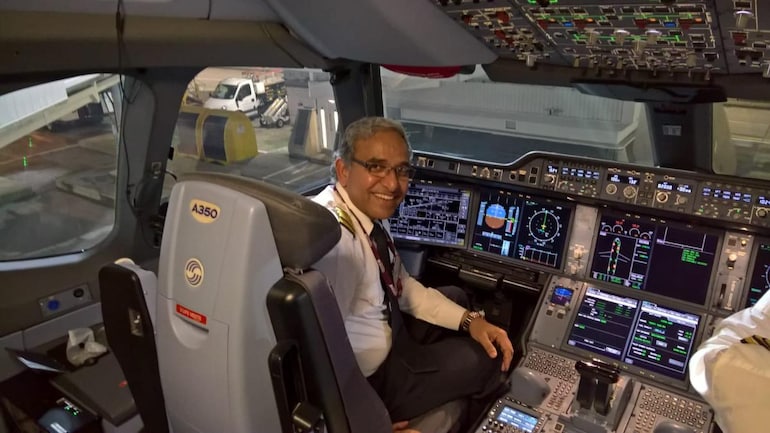SOURCE: INDIA TODAY

The induction of the first five Rafale fighter aircraft into the IAF brings new capabilities to the air force, like long range air-to-air missiles, air-to-ground cruise missiles and electronically steered radar. The last time the IAF saw such a quantum jump in combat capabilities was in June 1997, when it inducted the first eight Su-30K aircraft. These were the baseline aircraft which later became the Su-30MKI platform. INDIA TODAY executive editor Sandeep Unnithan caught up with Wing Commander B.N. Unnikrishnan (retired), formerly Squadron Commander of No 24 Squadron ‘Hawks’ at Lohegaon air force base Pune, and now a commercial airline pilot.
Q. What new capabilities did the Su-30 bring to the IAF back in 1997?
A. It brought in three new dimensions to the equation. The first one was range (3,000 km). Once upon a time, if the air force had to react to an event [in a particular area], it would need to move its squadrons near the theatre of operations to be able to react readily and to give its aircraft the range to respond to the missions. With the Sukhoi-30, for the first time, the IAF had the capability to deploy the aircraft from its home base to any place it wanted to. You also had a whole range of sectors in it could operate in freely. That is the greatest asset the IAF got with the Sukhoi-30. The second aspect [was] that it was a twin-seat fighter aircraft. Most fighter aircraft are single-seat aircraft, and the pilot ends up doing multiple things—flying the aircraft, navigating it from place A to place B, picking up and engaging the target… so there would be a slight limitation of weaponry that [could be brought to bear]. A two-seat aircraft with a specialist weapons system officer behind the pilot gave the IAF the ability to use varied amounts of munitions against varied targets. The last [dimension], I would say is indigenisation. The Sukhoi 30 [platform] was planned from the contract stage itself to have indigenisation as part of the package (as the Su-30 MKI). The defence research establishments and defence industry was operating hand in hand with the aircraft from the very beginning—I’m sure the dividends from this would stand the aircraft in good stead today as well as in the future.
Q. The induction of the Rafale is a passing of the baton of sorts. How long do you think it will take the IAF to exploit the Rafales to the fullest?
A. Difficult for me to judge. I’m outside the IAF [now]—however, there are few factors that are [relevant] for any aircraft induction. One is the pilots who have been inducted for this training—how much exposure they have had to modern avionics systems. Another aspect is the flying syllabus that was decided on and which they trained on in France. A third is the kind of weapon systems that will be [used with the aircraft] in India. I’ve been given to understand that weapon systems are already arriving, but, once you get a new weapon system and a new aircraft, you need to [integrate these] with your own systems. So it’ll take some time for us to modify our tactics and our plans, to learn how to utilise this aircraft in our own environment. It will take time for us to integrate this aircraft into a control and communications system for the air force. So overall, I would say about six months would be a ballpark figure for the full operationalisation of the squadron. Of course, this is also given a lot of ifs and buts, which [I might not] be aware of.
Q. What is your advice to the pilots who are going to be flying these new machines?
A. Any modern aircraft that comes in does so with a lot of automation, and there is a lot of information overload. The challenge for a person is to be able to declutter and to ensure they choose the right piece of information and use it at the right time, to be able to apply that information in the situation that demands it. What becomes important in modern airline and fighter operations is—not only to understand how the system works, but also to understand the whys of why a system works in a particular manner—the interaction between the various [sub] systems themselves. Without this understanding, it becomes very difficult to use a system to its best potential. So, my advice would be not only to learn the ‘hows’, but also learn the ‘whys’—and always be curious in learning. Second, however good your aircraft is and how good your weapon systems are, never, ever believe that your adversary is weak. Respect your adversary, prepare for them, so that if the need arises, you are able to project your will the way you need to project it.
Q. Do you miss fighter flying in your A-350?
A: All the time. My family jokes about it when I run to the balcony when I hear a fighter jet, trying to identify it. In fact a couple of years back when I was in Doha flying with Qatar Airways, I saw an IAF Su-30 MKI on the tarmac right in front of me—it was being ferried back to India from air exercises in France. I wish I had known it was [going to be] there. I would have gone and met the pilots.
from Indian Defence Research Wing https://ift.tt/3f6yBan
via IFTTThttp://idrw.org
No comments:
Post a Comment